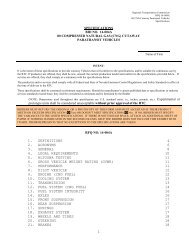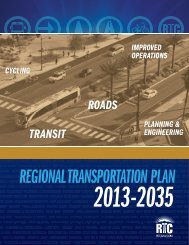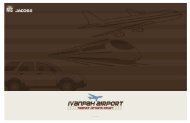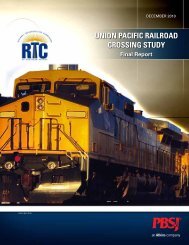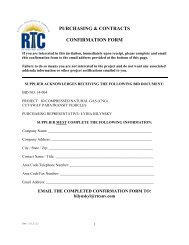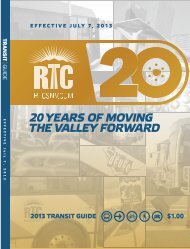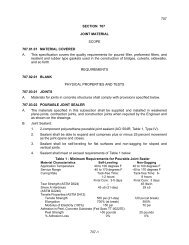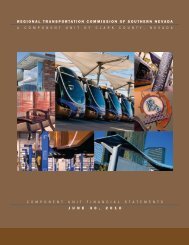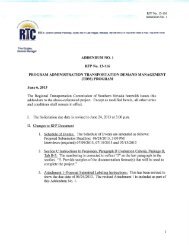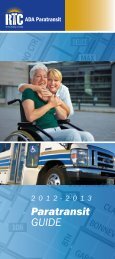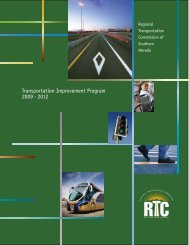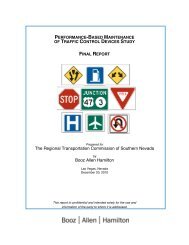(Blue Diamond Road) Corridor Study - Regional Transportation ...
(Blue Diamond Road) Corridor Study - Regional Transportation ...
(Blue Diamond Road) Corridor Study - Regional Transportation ...
You also want an ePaper? Increase the reach of your titles
YUMPU automatically turns print PDFs into web optimized ePapers that Google loves.
3. Overview of Transit Modes RTC SR-160 <strong>Corridor</strong> <strong>Study</strong><br />
Propulsion Systems<br />
Propulsion systems for BRT vehicles are undergoing the same evolution in propulsion<br />
systems as vehicles for conventional bus transit. The primary choices of propulsion<br />
systems are:<br />
<br />
<br />
<br />
Internal Combustion Engine – Vehicles with internal combustion engines derive<br />
their power from the combustion of a fossil fuel. Buses typically use diesel (now<br />
available in ultra low sulfur form) or natural gas (compressed or liquefied). Internal<br />
combustion engines are the most common vehicle propulsion systems.<br />
Trolley Buses / Dual-Mode Buses – Trolley buses have vehicle drives that are<br />
powered by electricity from overhead wires (catenary). Typically, trolley buses are<br />
used in tunnels (where zero pollutant emissions are required) or corridors with high<br />
bus volumes (where the amount of power delivered justifies the need to maintain<br />
infrastructure). Dual-mode buses can switch between electric power and power from<br />
an internal combustion engine.<br />
Hybrid-electric – Hybrid-electric drives combine internal combustion engines with<br />
an on-board energy storage device, such as a battery. The advantages of hybridelectric<br />
drives over conventional buses include smoother and quicker acceleration,<br />
more efficient braking, improved fuel economy, and reduced emissions.<br />
Other technologies such as fuel cell and electric batteries are still not developed enough to<br />
be commercially viable.<br />
3.2.3 Infrastructure Elements<br />
Running Ways<br />
BRT systems often include running ways that are<br />
specially designed for the exclusive use of BRT<br />
vehicles during part or all of a service day.<br />
Running ways for BRT can include any of the<br />
following running way types:<br />
<br />
<br />
<br />
Designated or reserved lanes – lanes on<br />
arterial lanes that provide a fast, reliable<br />
alternative to mixed flow lanes<br />
At-grade transitways – exclusive lanes<br />
operating in a separate right-of-way with<br />
occasional intersections with cross-streets<br />
Fully Grade-Separated Exclusive Transitways – Exclusive lanes operating in a<br />
separate right-of-way with no crossings, enabling maximum speed between stations<br />
3-8



